Submarine aircraft carriers of the Japanese Empire
During World War II in the Japanese Imperial navy special large-sized submarines were built to transport seaplanes. Seaplanes were stored folded in a special hangar inside the submarine.
Takeoff was carried out in the surface position of the submarine; after the aircraft was taken out of the hangar and assembled for takeoff, special runner catapults of the shortened launch were built at the bow of the submarine, from which the seaplane rose into the sky. After the flight was completed, the seaplane splashed down and was removed back into the submarine's hangar.
Japan Projects
Project J-1M - “I-5” (with one reconnaissance seaplane, launch from the water);
Project J-2 - “I-6” (one reconnaissance seaplane, launching from a catapult);
J-3 Project - I-7, I-8;
Project 29 type "B" - 20 units;
Type "B-2" - 6 units;
Type "B-3" - 3 units (the submarines had hangars, but never carried airplanes - converted into "Kaiten", torpedoes, controlled by suicide pilots);
Project A-1 - 3 units (one reconnaissance seaplane, launching from a catapult);
Type I-400 - 3 units (Aichi M3A Seiran seaplane 6);
Type "AM" - 4 units (2 seaplane bomber "Sayran"), 2 units not completed.
Aichi M6A Seiran seaplane torpedo bomber
Creation started in 1942, the first flight took place in December 1943, adopted for use in 1944. The chief designer of the machine is Norio Ozaki. Total built 28 units.
Main performance characteristics:
Crew: 2 person;
Cruising speed: 300 km / h;
Max. ground speed: 430 km / h;
Max. speed at height: 475 (5200 m) km / h;
Range of flight: 1200 km;
Practical ceiling: 9900 m;
Length: 11,64 m;
Height: 4,58 m;
Wingspan: 12,3 m;
Wing area: 27 m²;
Empty: 3300 kg;
Equipped: 4040 kg;
Maximum take-off weight: 4445 kg;
Engines: Aichi AE1P Atsuta 32;
Traction (power): 1400 hp;
Small-gun armament: 1x13-mm machine gun Type 2;
Number of suspension points: 3;
Suspended armament: 2х250 kg or 1 x800 kg or 1 x850 kg torpedo;
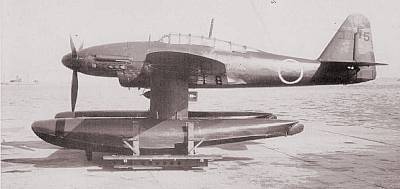
Project Type I-400
Japanese submarines, designed in 1942-1943, as long-range submarine aircraft carriers for operations anywhere in the world, including the US coast. Submarines of type I-400 were the largest among those built during World War II and remained so until the appearance of atomic submarines. According to the project, they planned to build the 16 PL, in 1943, the plan was reduced to 9 PL. Began to build 6 submarines, managed to build in 1944-1945. only three. They did not have time to go to battle, after the surrender they were handed over to the United States, in the 1946 year they were flooded, since the USSR began to demand access to them.
Base TTX
Speed (surface) - 18,75 nodes;
Speed (underwater) - 6,5 nodes;
Extreme depth of immersion - 100 m;
The autonomy of navigation - 90 days, 69 500 km at 14 nodes, 110 km underwater;
Crew - according to various sources, from 144 to 195 people, including the 21 officer;
Displacement above the water - 3 530 t standard, 5 223 t full;
Underwater displacement - 6 560 t;
The length is the greatest (by KVL) -122 m;
Case width naib. - 12 m;
Average draft (by CWL) - 7 m;
The power plant is a diesel electric, 4 diesel, 7 700 hp, 2 electric motor, 2 400 hp, 2 propeller shaft;
Armament: Artillery - 1 × 140 mm / 40, 10 × 25 mm Type 96, torpedo-mine armament - 8 bow 533 mm TA, 20 torpedoes;
Aviation - 3-4 seaplane (one disassembled) Aichi M6A Seiran.
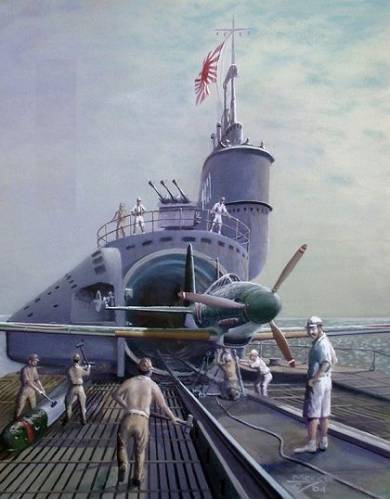
There is evidence that the Japanese aircraft carriers were preparing for a retaliatory strike on the territory of the United States, after the atomic bombing of the territory of Japan, Tokyo planned a biological attack. The submarines were to reach the US West Coast ("Operation PX"), and there the seaplane bombers were supposed to strike at American cities, dropping containers with live rats and insects infected with the causative agents of bubonic plague, cholera, Danghe fever, typhoid and other deadly diseases.
The possibility of hitting the Panama Canal and attacking American aircraft carriers in the Uliti Atoll (where the invading forces on the Japanese islands were concentrated) was also considered.
American aircraft carriers parked at Uliti CV-18 "Wosp", CV-10 "Yorktown", CV-12 "Hornet", CV-19 "Hancock" and CV-14 "Ticonderoga", 8 December 1944 of the year.
15 August 1945, Japan capitulated, and on the same day, the submarine commanders were ordered to return to base in connection with the termination of the war and destroy all offensive weapon as especially secret. The commander of the flagship boat I-401, Captain I rank Aridzumi, shot himself to death, and the team ejected the planes without pilots, not starting the engines. On I-400 did easier - and the planes and torpedoes simply pushed into the water. So ended story the largest submarines of the Second World War, combining the most advanced technologies of the time and suicide pilots.
All “submarine aircraft carriers” were brought to study at the US Naval base Pearl Harbor (Hawaii), and in May 1946 were diverted into the sea and shot by torpedoes, because Soviet scientists demanded access to them.
The fact that Japanese submarines could indeed strike at the United States proves the incident that occurred in September 1942. When planes with Japanese identification marks dropped several bombs on populated areas of the US state of Arizona, this caused a wave of panic among the population of the state. It was completely incomprehensible where the bombers came from, since the US Navy never after the Pearl Harbor allowed the Japanese aircraft carriers to reach the American coast for a possible raid. As it turned out after the war, the bombers launched from Japanese submarine aircraft carriers.
The Japanese were able to keep the program of "underwater aircraft carriers" secret until the end of the war.
Hangar on I-400.
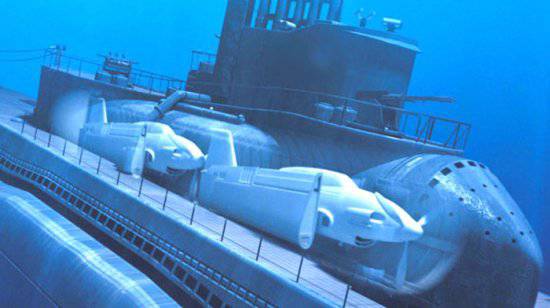
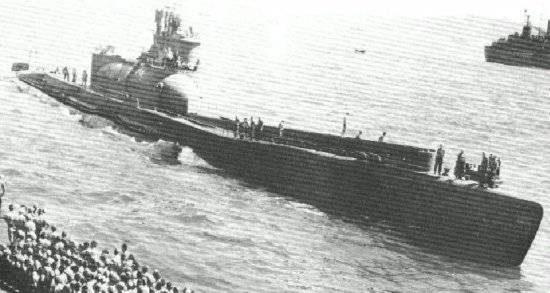
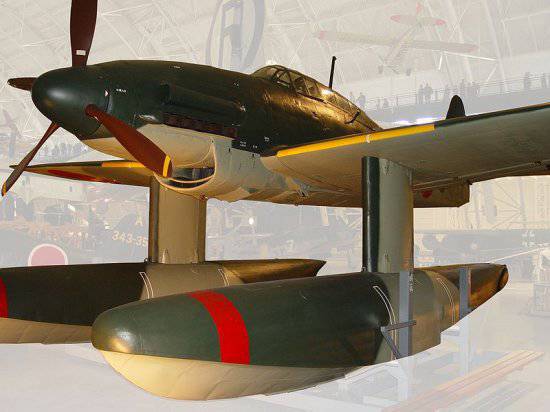
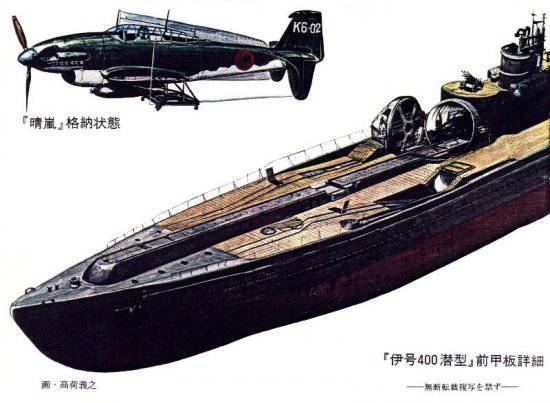
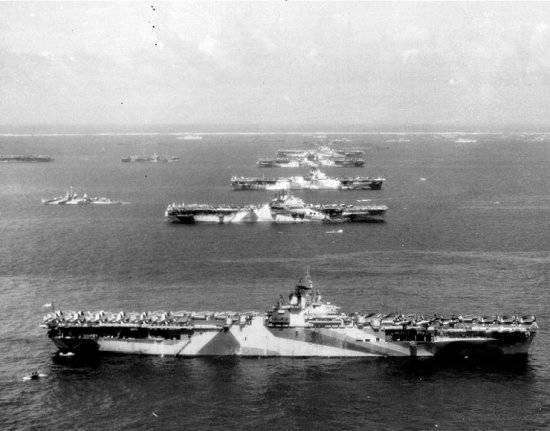
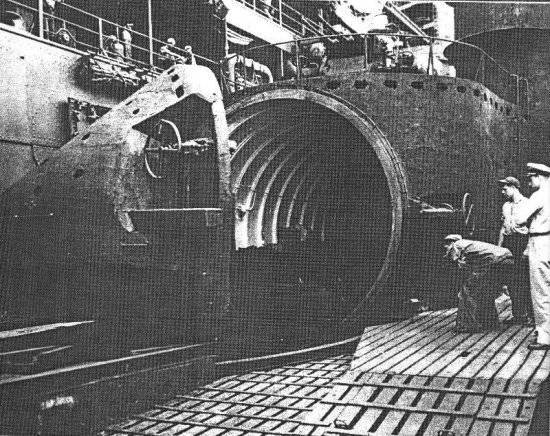
Information